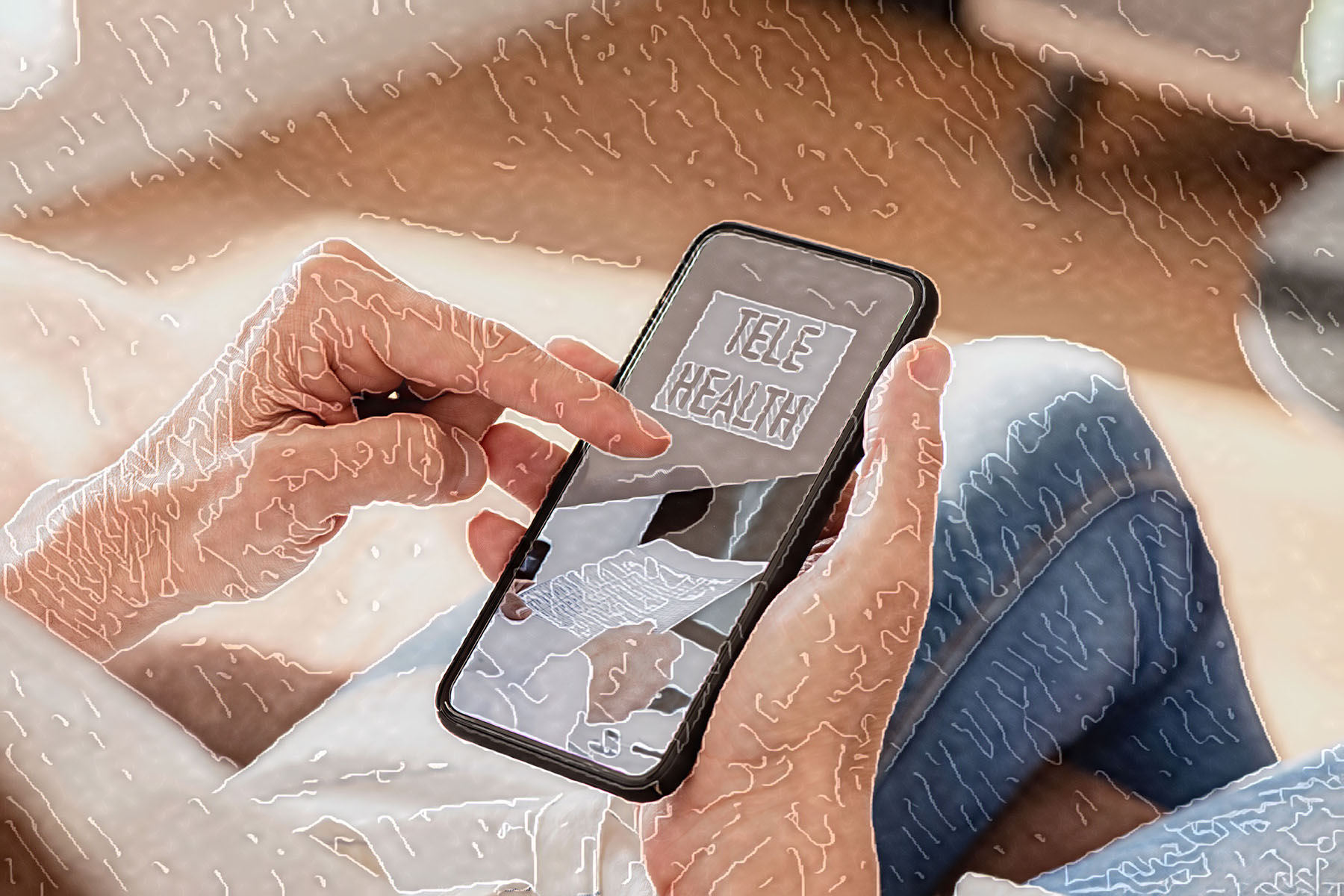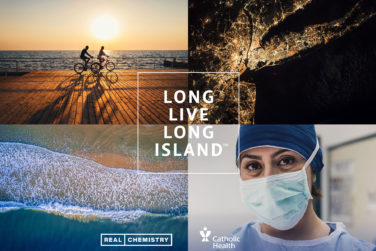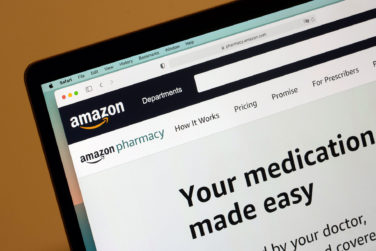Patient-centric marketers are always thinking about the micro-moments where they can make a difference in the patient’s life. But the pandemic forced marketers to think differently as the patient’s functional journey was transformed.
At the beginning of the pandemic, the CDC advocated for telehealth virtual care—and its use exploded with a 154% increase during the last week of March 2020 compared to the same period in 2019.1 However, since then, data tells quite a story about the gradual decline of telehealth use. According to the Petersen KFF Health Systems Tracker:
Many enrollees have had increased access to telehealth services over the last two years. During this period, telehealth use soared from less than 1% of outpatient visits before the pandemic to 13% of outpatient visits in the first six months of the COVID-19 pandemic. This rate declined to 11% during the next six-month period, and then to 8% a year into the pandemic (March-August, 2021).2
During this period when telehealth use was increasing, and in-patient visits decreasing, you would also think to see a significant rise in the use of remote patient monitoring (RPM) technology, but uptake has remained slow in that area. A 2020-member survey of the American College of Physicians revealed that just 24% of practices have RPM technology available, a rate that the report notes “is somewhat lower than other technologies.”3
While uptake might be slow for RPM, I think there is still a huge opportunity to penetrate this market in the U.S., particularly for life sciences marketers. As an industry, we need to assess the available technology being used for remote healthcare and to align where it fits along the patient’s functional journey, all its micro-moments, pain points, or saturation points.
The problem is that technology is simply not being presented to the marketer as a real solution—as a marketing investment. Tech is being presented as a cost. That must change. The key to that change is educating marketers about this technology, which at times can be too cumbersome to understand, especially when trying to assess its business impact or how to design it for the optimal patient experience.
“Tech and education now go hand in hand, with marketers and patients alike,” says Augie Caruso, EVP, Sales & Key Accounts, Health Monitor Network. “Marketers need to be educated on the benefits that technology can offer to their brand, providing a new innovative way to keep their brand message in front of patients at a time when it will resonate the most. Tech comes with a cost, but the impact that cost can have on helping to drive results for the brand, far outweighs the upfront investment.”
Technology is supporting the seismic shift in many value exchanges between our industry and patients who have gone remote. What role can our industry play in ensuring this tech can truly benefit patients? Let’s break it down.
What Is RPM?
Simply stated, RPM is a technology. It’s a manner in which marketers can start dialogue with patients, caregivers, and their care teams. There are gaps and opportunities within RPM, and marketers should hold themselves accountable to better understand RPM’s definition/value.
According to the Center for Connected Health Policy (CCHPCA), RPM has a very specific definition: “Personal health and medical data collection from an individual in one location, which is transmitted via electronic communication technologies to a provider in a different location for use in care and related support.”4
Examples of the technology can be commonplace such as items that can be purchased in a retail setting like medical alert systems, maternity care monitors, electrocardiography (ECG) devices, medication monitors, smart scales, or pulse oximeters. Or they can be more innovative such as in New Zealand where they have “biostickers…85mm long, made of soft flexible material and are worn on the upper left chest. They capture medical-grade data, such as skin temperature, heart rate, and respiratory rate, which is transmitted to the medical professionals who are treating the patients.”5
Technology from RPM solutions can obtain valuable identifiable data about patients and from patients. This data-driven approach to better understanding patients translates to more accuracy in what’s going on with a patient’s therapy whether it’s an induction, maintenance, or refractory therapeutic in a later line of therapy. Regardless, it’s critical to remain compliant and respect policies of all kinds regarding patient privacy when utilizing technologies as marketers.
Where Can RPM and Marketing Coincide?
Marketers need to understand how RPM solutions work, their nuances with demographics, and their interworking principles when they’re designed to protect the sanctity of the patient-to-HCP dialogue. All while putting the power of the patient’s data in the right hands—the patient’s hands.
When a patient, for example, does not have access to a therapeutic granted via prescription to them by a prescriber, it’s the marketer’s responsibility to enable solutions such as RPM that pick the patient up, point the patient in the right direction, and get the patient one step closer to a personalized treatment goal. When a patient is readmitted into a hospital for acute events due to the chronic disease progressing, where symptoms worsen, or therapy must intensify, it is also the marketer’s responsibility to know and react with precision and timeliness.
Patient’s health records are passed, technologically speaking, to help optimize the user experience, so a marketer can work closely with enterprise, IT, agencies, and specialty consultants to connect a disconnected journey. This all can be achieved by administering technologies at very precise points. Connected experiences that roadmap alignments to holistic journeys using a best-in-class tech stack to in turn penetrate health systems, hospital clinics, practices, satellites, and point of care (POC).
Why Is RPM Beneficial?
RPM is all in real time, which allows for speed of HCP decision-making, triage, or management of next steps. RPM serves to help the patients and their families receive the best healthcare they deserve in a super convenient, out of home, or on-the-go environment (pending Bluetooth or Wi-Fi connectivity performance).
It is important to keep in mind some rural regions don’t have performance bandwidth for effective telehealth services. As pharma marketers, we must better understand the inland regions of the U.S. and cater to them with solutions that are proficient and easy to connect, especially when it takes the populace over one hour to get to a doctor.
One of the most noteworthy RPM benefits is the capability of marrying the Electronic Medical Record (EMR) with the identifiable, patient-generated data sourced from monitoring solutions. In this case, providers are empowered because their patient’s diagnostic, therapeutic, and adherence information are in one clinical workflow to inform their decision-making. Meanwhile, patients are enabled to be proactive in customizing their own standard of care. A patient’s connected devices such as Apple Watch, sleep apnea machine, or telehealth application are all talking with one another—and thanks to RPM service providers, multi-specialty care teams are talking back!
We see the fruits of the benefit in stronger patient outcomes being proven by research into telehealth—one RPM solution type—specifically in the primary care arena.
A research study from Creighton University writes that medical institutions that use telehealth have an average patient-to-nurse ratio of 15 to 1, compared to non-telehealth institutions with an average of 11 to 1. This shows that the provision of RPM and other telehealth services allows for more efficiency in the field of primary care. As a result, specialized physicians can devote more time to more urgent cases.6
Is Telehealth a Synonym for RPM?
As previously stated, telehealth is just one example of RPM. Therefore, they are not synonymous. Telehealth, like other RPM, is a technology that “plugs in” to a patient’s health and wellness state of affairs and gives that patient a medium with private, safe methods of reaching a medical professional in a timely manner.
The Health Resources Services Administration defines telehealth as the use of electronic information and telecommunications technologies to support long-distance clinical healthcare, patient and professional health-related education, public health, and health administration. Technologies include videoconferencing, the internet, store-and-forward imaging, streaming media, and terrestrial and wireless communications.7
Telehealth is mainstream, not to be confused with telemedicine, a different animal. It’s important to distinguish this vernacular as any modern marketer strives to become more familiar with the technology stack.
Telehealth is different from telemedicine because it refers to a broader scope of remote healthcare services than telemedicine. While telemedicine refers specifically to remote clinical services, telehealth can refer to remote non-clinical services, such as provider training, administrative meetings, and continuing medical education, in addition to clinical services.8
Telemedicine is an area where marketers can deepen their understanding by testing and learning. For example, look at Amazon, which in August stopped investing in telehealth with its employee solution (Amazon Care) ending service on Dec 31st. Why stop investing in this solution but continue the pursuit of home health wearables, virtual 24/7 care, and large acquisitions such as with One Medical?9 Marketers should consider this test and learn agenda point as a reality check that not every “pilot” is going to work in remote monitoring—even by a company as large as Amazon.
Why Does this Matter to Marketers?
As long as Amazon is paying attention to the market, listening to the data, verifying and validating their investment decisions, then others should too! Marketers should start to look at remote methods and begin to align RPM to the POC continuum where the patient can receive education when they are primed and ready to receive it.
“Whether patients choose some method on the evolving RPM continuum or in-office POC visits, they need content that educates, empowers, and inspires them to take action to achieve a better health outcome for themselves or a loved one,” adds Caruso. “Marketers must ensure that their content will help the patient foster a deeper engagement with their HCPs. Experimenting with new digital technology while ensuring credible patient education is vital for brands in a world where patients are more educated and discerning.”
For example, why shouldn’t marketers pioneer a way of delivering patients the type of wallboard education that they might see in a doctor’s office, but in the privacy of their living room via a remote platform? It wouldn’t be the same as a banner advertisement on the internet or a billboard on the highway, but something of a hybrid that starts a conversation with family. Marketers could also set up cohorts to test the relative impact of one over the other (i.e., at which dayparts or in which regions does activity over index). Studies show RPM markets are growing; therefore, alliances such as this may be palatable.
A recent KLAS Research report found 38% of healthcare organizations report that their RPM program reduced admissions, while 25% cited improved patient satisfaction and 25% reported cost reductions since implementing an RPM program. And as an aging population and labor shortages pressure providers and payers to relocate treatment outside the hospital, the market is set to surge to nearly $16 billion by 2023, per Research and Markets.10
Research also tells us that patient preference carries weight in the doctor-patient relationship. Technology usage is one preference to explore as marketers are charged to support patients from clinical trial recruitment through early asset education to later lifecycle promotion.
[In February 2021], 525 patients with a wide range of differing clinical conditions and demographics participated [in a study]. Patients indicated they used a range of technologies in their everyday lives and to manage their health. Almost 60% of patients would prefer to return to hospital if they were experiencing symptoms of concern. However, if patients experienced symptoms that were not of concern, over 60% would prefer to communicate with the hospital via telephone or using technology.11
To support patients and their use of technology may mean a lot of things, such as joining communities that are pressure testing innovation and finding ways to better educate patients about technologies in an increasingly virtual care world. Or it can be done by trying remote patient monitoring solutions yourselves at home. The bottom line: when we empathetically put ourselves in someone else’s shoes, it makes it easier to embrace the new possibilities technology can offer and discover ways our industry can further help patients.
References:
1. Lisa M. Koonin, DrPH; Brooke Hoots, PhD; Clarisse A. Tsang, MPH; Zanie Leroy, MD; Kevin Farris, MAEd; B. Tilman Jolly, MD; Peter Antall, MD; Bridget McCabe, MD; Cynthia B.R. Zelis, MD; Ian Tong, MD; Aaron M. Harris, MD. “Trends in the Use of Telehealth During the Emergence of the COVID-19 Pandemic — United States, January–March 2020.” Weekly. October 30, 2020. 69(43);1595–1599. https://www.cdc.gov/mmwr/volumes/69/wr/mm6943a3.htm.
2. Justin Lo, Matthew Rae, Krutika Amin, and Cynthia Cox. “Outpatient Telehealth Use Soared Early in the COVID-19 Pandemic but Has Since Receded.” Peterson-KFF Health System Tracker. https://www.healthsystemtracker.org/brief/outpatient-telehealth-use-soared-early-in-the-covid-19-pandemic-but-has-since-receded.
3. Mark Clements, MD, PhD, and Sarine Babikian, PhD, MS. “Misconceptions and Truths About Remote Patient Monitoring.” HealthTech HotSpot. https://healthtechhotspot.com/misconceptions-and-truths-about-remote-patient-monitoring.
4. “What Is Telehealth?” Center for Connected Health Policy. https://www.cchpca.org/what-is-telehealth/?category=remote-patient-monitoring.
5. Dean A. Seehusen, MD, MPH, and Anne Azrak, DO. “The Effectiveness of Outpatient Telehealth Consultations.” Am Fam Physician. 2019;100(9):575-577. https://www.aafp.org/pubs/afp/issues/2019/1101/p575.html.
6. Roanne James. “RPM Does More Than Help Patients — Here’s What It Does for Healthcare Workers.” RPM Healthcare. https://rpmhealthcare.com/rpm-does-more-than-help-patients-heres-what-it-does-for-healthcare-workers.
7. “A New Normal — Remote Patient Monitoring (RPM): Types of Real-World Devices and Current Statistics.” Emerline. https://emerline.com/blog/remote-patient-monitoring-statistics.
8. “Frequently Asked Questions.” HealthIT.gov. https://www.healthit.gov/faq/what-telehealth-how-telehealth-different-telemedicine.
9. Catherine Thorbecke. “Amazon to Buy One Medical for $3.9 Billion as it Expands Healthcare Footprint.” CNN. https://www.cnn.com/2022/07/21/tech/amazon-one-medical/index.html.
10. Shelagh Dolan. “Top Remote Patient Monitoring Companies, Vendors, and Startups in 2022.” Insider Intelligence. https://www.insiderintelligence.com/insights/remote-patient-monitoring-companies-startups.
11. Kim E. Alexander, Theodora Ogle, Hana Hoberg, Libbie Linley, and Natalie Bradford. “Patient Preferences for Using Technology in Communication About Symptoms Post Hospital Discharge.” BMC Health Serv Res. 2021 Feb 15;21(1):141. doi: 10.1186/s12913-021-06119-7. https://pubmed.ncbi.nlm.nih.gov/33588829.










